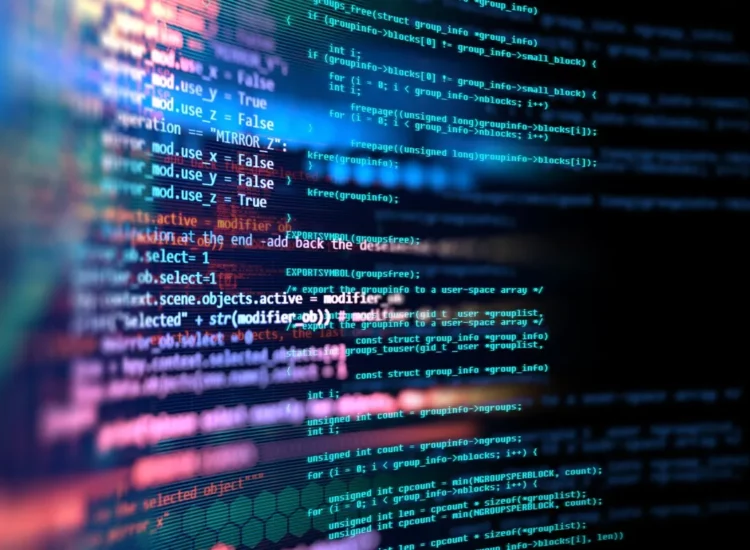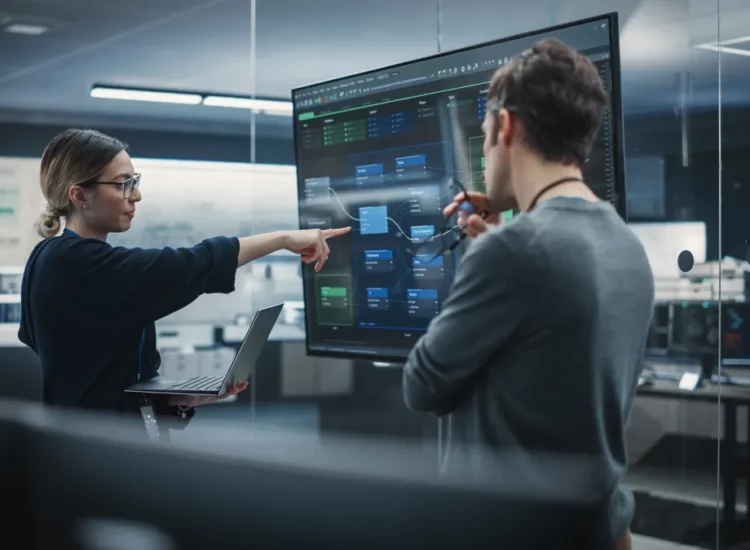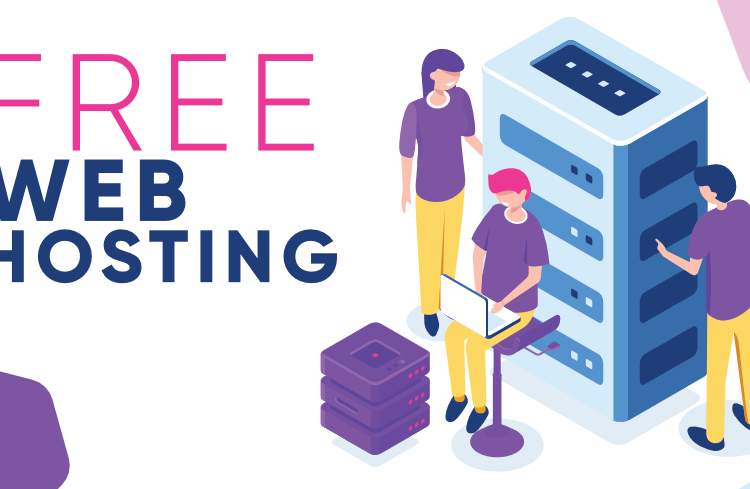The Power of Collaboration: Exploring the Realm of Open Artificial Intelligence
Artificial intelligence (AI) is rapidly transforming various aspects of our lives, from the way we work and communicate to the products and services we use daily. As AI continues to evolve, the concept of “open artificial intelligence” has gained significant traction, representing a paradigm shift towards collaborative development, shared knowledge, and democratized access to this powerful technology. This comprehensive article will delve into the multifaceted world of open AI, exploring its definition, benefits, challenges, real-world applications, and the profound implications it holds for the future of technology and society.
Toc [Hide]
- 1. 1. Introduction to Open Artificial Intelligence
- 2. 2. The Benefits and Advantages of Open AI
- 3. Related articles 01:
- 4. 3. Challenges and Considerations in Open AI Development
- 4.1. 3.1. Ensuring Responsible Use and Mitigating Potential Risks
- 4.2. 3.2. Addressing Bias and Fairness in Openly Available AI Models
- 4.3. 3.3. The Need for Robust Security and Governance Frameworks
- 4.4. 3.4. Balancing Openness with Intellectual Property and Commercial Interests
- 4.5. 3.5. The Computational and Data Requirements for Open AI Projects
- 5. 4. Examples and Applications of Open AI
- 6. Related articles 02:
- 7. 5. The Future of Open AI and its Societal Implications
- 7.1. 5.1. Potential Breakthroughs and Advancements Driven by Open AI
- 7.2. 5.2. The Role of Open AI in Addressing Global Challenges
- 7.3. 5.3. Implications for Education, Employment, and the Economy
- 7.4. 5.4. The Ongoing Debate about the Governance and Regulation of Open AI
- 7.5. 5.5. The Vision of a Future Shaped by Open and Accessible Artificial Intelligence

1. Introduction to Open Artificial Intelligence
The term “open artificial intelligence” encompasses a range of ideas and initiatives centered around making AI research, development, and resources more accessible and collaborative. Understanding the core concepts and the historical context behind this movement is crucial to appreciating its significance.
1.1. Defining Open Artificial Intelligence: Concepts and Principles
Open artificial intelligence, in its broadest sense, refers to the movement and practice of making AI technologies, including algorithms, models, data, and research findings, freely available for others to use, study, modify, and distribute. The core principles underpinning open AI include transparency, collaboration, accessibility, and the belief that shared knowledge and collective effort will accelerate the progress of AI for the benefit of all. This often involves the use of open-source licenses for software and data, encouraging a community-driven approach to innovation.
1.2. The Historical Context and Evolution of Open AI Initiatives
The concept of openness has a long history in the software and scientific communities, with movements like open-source software and open science advocating for transparency and collaboration. In the context of AI, the idea of open collaboration has been present in various forms throughout its history. However, the recent surge in interest in open AI can be attributed to several factors, including the increasing power and potential impact of AI, concerns about the concentration of AI power in the hands of a few large corporations, and a desire to foster broader participation and scrutiny in its development. Initiatives like OpenAI (initially founded as a non-profit with an open mission), the release of open-source AI frameworks by major tech companies, and the growth of collaborative research platforms have all contributed to the evolution of the open AI landscape.
1.3. Distinguishing Open AI from Closed or Proprietary AI
Open AI stands in contrast to closed or proprietary AI, where the algorithms, models, and data are kept secret and under the exclusive control of a specific organization. In proprietary AI development, the inner workings of the AI systems are often not transparent, and access to the technology may be restricted to paying customers or internal users. Open AI, on the other hand, emphasizes the sharing of knowledge and resources, allowing for greater scrutiny, independent verification, and the potential for wider adoption and adaptation. This distinction is crucial in understanding the different approaches to AI development and their respective implications.
1.4. The Growing Importance of Openness in the AI Landscape
The increasing importance of openness in the AI landscape stems from a growing recognition that AI is a technology with the potential to profoundly impact society. Many believe that the development of such a powerful technology should not be solely confined to a few entities but should involve a broader community of researchers, developers, and the public. Openness can foster greater trust in AI systems, facilitate the identification and mitigation of potential biases and risks, and accelerate the development of AI solutions for a wider range of applications and societal challenges. As AI becomes more integrated into our lives, the principles of transparency and accessibility championed by the open AI movement are becoming increasingly vital.
2. The Benefits and Advantages of Open AI
The open approach to artificial intelligence offers a multitude of benefits that can accelerate its development, ensure its responsible use, and democratize its access.

2.1. Fostering Innovation and Collaboration in AI Research
One of the primary advantages of open AI is its ability to foster innovation and collaboration within the AI research community. By making research findings, code, and datasets openly available, open AI initiatives encourage researchers from diverse backgrounds and institutions to build upon each other’s work. This collaborative environment can lead to the rapid exchange of ideas, the identification of new research directions, and the accelerated development of more robust and effective AI models. The open sharing of knowledge eliminates redundant efforts and allows the entire community to benefit from the latest advancements.
2.2. Accelerating the Pace of AI Development and Discovery
The open sharing of resources and knowledge inherent in open AI can significantly accelerate the pace of AI development and discovery. When researchers and developers have access to pre-trained models, well-curated datasets, and established codebases, they can build upon this existing foundation rather than starting from scratch. This can dramatically reduce the time and resources required to develop new AI applications and can lead to faster breakthroughs in various fields. The ability to readily access and adapt existing AI technologies empowers a wider range of individuals and organizations to participate in the AI revolution.
2. https://ngungtaonghiep.com/mmoga-elevate-your-websites-with-free-web-hosting-services-1
5. https://ngungtaonghiep.com/mmoga-the-power-of-managed-wordpress-hosting-1
2.3. Promoting Transparency and Trust in AI Systems
Transparency is a key principle of open AI, and it plays a crucial role in building trust in AI systems. When the algorithms, models, and data used to develop AI are openly accessible and well-documented, it allows for greater scrutiny and understanding of how these systems work. This transparency can help to identify potential biases, limitations, and unintended consequences of AI, enabling researchers and developers to address these issues proactively. By fostering a more open and understandable AI ecosystem, open AI can help to build public confidence in the technology and promote its responsible adoption.
2.4. Democratizing Access to Advanced AI Technologies
Historically, the development and deployment of advanced AI technologies have been largely concentrated within large corporations with significant resources. Open AI initiatives aim to democratize access to these powerful tools, making them available to a wider range of individuals, startups, and organizations, regardless of their financial or technical capabilities. By providing open-source frameworks, pre-trained models, and accessible platforms, open AI empowers a broader community to leverage AI for innovation and problem-solving in various domains. This democratization can lead to a more equitable distribution of the benefits of AI and foster a more diverse and inclusive AI ecosystem.
2.5. Encouraging Ethical Considerations and Responsible AI Development
The open nature of open AI can also encourage more robust ethical considerations and responsible AI development practices. When AI research and development are conducted in the open, it allows for broader discussion and scrutiny of the ethical implications of the technology. Researchers and the public can collaboratively identify potential risks, biases, and societal impacts of AI applications, leading to the development of more ethical guidelines and responsible development practices. The transparency inherent in open AI can also make it easier to audit and monitor AI systems for compliance with ethical principles and societal values.
3. Challenges and Considerations in Open AI Development
While the benefits of open AI are significant, there are also several challenges and considerations that need to be addressed to ensure its successful and responsible development and deployment.
3.1. Ensuring Responsible Use and Mitigating Potential Risks
One of the primary challenges of open AI is ensuring its responsible use and mitigating potential risks. Making powerful AI models and tools openly available could potentially lead to their misuse for malicious purposes, such as generating misinformation, creating deepfakes, or developing autonomous weapons. Robust mechanisms and guidelines are needed to prevent the misuse of open AI technologies and to promote their ethical and beneficial applications. This requires collaboration between researchers, developers, policymakers, and the public to establish clear ethical frameworks and safeguards.
3.2. Addressing Bias and Fairness in Openly Available AI Models
AI models are trained on data, and if that data contains biases, the resulting models can perpetuate and even amplify those biases, leading to unfair or discriminatory outcomes. In the context of open AI, if biased models and datasets are made widely available, they could contribute to the widespread adoption of biased AI systems. Therefore, it is crucial to prioritize the development of fair and unbiased AI models and datasets within the open AI community. This requires careful attention to data collection and curation, as well as the development of techniques for detecting and mitigating bias in AI algorithms.
3.3. The Need for Robust Security and Governance Frameworks
As open AI models become more powerful and are used in a wider range of applications, ensuring their security and establishing appropriate governance frameworks become increasingly important. Openly available AI systems could be vulnerable to attacks or manipulation, potentially leading to unintended or harmful consequences. Robust security measures are needed to protect these systems from malicious actors. Furthermore, clear governance frameworks are required to define responsibilities, establish accountability, and ensure that open AI technologies are developed and used in a way that aligns with societal values and regulations.
3.4. Balancing Openness with Intellectual Property and Commercial Interests
While the open AI movement advocates for the free sharing of knowledge and resources, there is also the reality of intellectual property rights and commercial interests. Many organizations invest significant resources in developing AI technologies, and they may be hesitant to make their成果 freely available due to concerns about losing their competitive advantage or the ability to monetize their innovations. Finding a balance between the principles of openness and the need for protecting intellectual property and fostering commercial innovation is a complex challenge that the open AI community continues to grapple with. Different licensing models and collaborative frameworks are being explored to address this issue.
3.5. The Computational and Data Requirements for Open AI Projects
Developing and training advanced AI models often requires significant computational resources and large amounts of high-quality data. While open AI aims to democratize access to AI, the practical reality is that these resource requirements can still be a barrier for individuals and smaller organizations. Initiatives that provide access to affordable computing power and openly available, well-curated datasets are crucial for ensuring that a wide range of participants can contribute to and benefit from open AI development. Addressing the computational and data divide is essential for truly democratizing AI.
4. Examples and Applications of Open AI
Despite the challenges, the open AI movement has already yielded significant results, with numerous examples of open-source frameworks, collaborative research initiatives, and real-world applications.

4.1. Open-Source AI Frameworks and Libraries (e.g., TensorFlow, PyTorch)
One of the most significant contributions of the open AI movement has been the development and widespread adoption of open-source AI frameworks and libraries. TensorFlow, developed by Google, and PyTorch, initially developed by Facebook, are two prominent examples. These powerful tools provide developers with the building blocks they need to create, train, and deploy AI models. Their open-source nature allows for community contributions, rapid innovation, and widespread accessibility, significantly accelerating the development of AI applications across various domains.
4.2. Collaborative AI Research Initiatives and Platforms
Several collaborative research initiatives and platforms embody the spirit of open AI. These initiatives bring together researchers from different institutions and backgrounds to work on shared AI challenges. Examples include projects focused on developing open datasets, creating benchmarks for AI performance, and fostering discussions on the ethical implications of AI. These collaborative efforts help to accelerate progress by pooling expertise and resources and by promoting transparency in the research process.
2. https://ngungtaonghiep.com/mmoga-artificial-intelligence-shaping-our-present-and-defining-our-future
4.3. Openly Available Datasets for AI Training and Development
The availability of high-quality, openly accessible datasets is crucial for training effective AI models. Several organizations and initiatives are dedicated to creating and sharing datasets for various AI tasks, such as image recognition, natural language processing, and speech recognition. These open datasets lower the barrier to entry for researchers and developers who may not have the resources to collect large datasets themselves, fostering innovation and enabling the development of AI solutions for a wider range of problems.
4.4. Examples of Open AI in Specific Industries (e.g., Healthcare, Education, Environment)
Open AI principles and technologies are being applied in various industries to address real-world challenges. In healthcare, open AI is being used to develop diagnostic tools, personalize treatments, and accelerate drug discovery. In education, open educational resources and AI-powered learning platforms are making education more accessible and personalized. In the environmental sector, open AI is being used to monitor climate change, predict natural disasters, and optimize resource management. These examples demonstrate the potential of open AI to drive positive impact across diverse fields.
4.5. Community-Driven Open AI Projects and Contributions
The open AI movement is also characterized by a vibrant community of individuals who contribute to open-source projects, share their knowledge, and collaborate on AI development. Platforms like GitHub host countless open AI projects, ranging from small libraries to large-scale models. This community-driven approach fosters innovation, allows for rapid iteration and improvement of AI technologies, and empowers individuals to contribute to the advancement of AI, regardless of their institutional affiliation.
5. The Future of Open AI and its Societal Implications
The future of open AI holds immense potential for transforming technology and society. As the field continues to evolve, the principles of openness are likely to play an increasingly important role in shaping its trajectory.
5.1. Potential Breakthroughs and Advancements Driven by Open AI
The collaborative and transparent nature of open AI is likely to accelerate the pace of breakthroughs and advancements in the field. By fostering a global community of researchers and developers working together on shared challenges, open AI can unlock new possibilities in areas such as general artificial intelligence, advanced robotics, and the understanding of complex systems. The open sharing of knowledge and resources will likely lead to more rapid progress and the development of more powerful and versatile AI technologies.
5.2. The Role of Open AI in Addressing Global Challenges
Open AI has the potential to play a significant role in addressing some of the world’s most pressing global challenges, such as climate change, poverty, disease, and inequality. By making AI tools and knowledge more accessible, open AI can empower researchers, organizations, and communities around the world to develop innovative solutions to these complex problems. Collaborative open AI initiatives focused on specific global challenges can harness the collective intelligence of a diverse group of experts to drive meaningful progress.
5.3. Implications for Education, Employment, and the Economy
The rise of open AI will likely have significant implications for education, employment, and the economy. Open educational resources and AI-powered learning platforms can make high-quality education more accessible to individuals worldwide. The increasing automation of tasks through AI may lead to shifts in the job market, requiring individuals to adapt their skills and acquire new ones. The growth of the open AI ecosystem could also foster new industries and business models, creating new economic opportunities. Understanding and preparing for these societal shifts will be crucial.
5.4. The Ongoing Debate about the Governance and Regulation of Open AI
As open AI becomes more powerful and pervasive, the debate about its governance and regulation will likely intensify. Questions around the responsible development and deployment of open AI, the mitigation of potential risks, and the establishment of ethical guidelines will need to be addressed through ongoing dialogue and collaboration between researchers, developers, policymakers, and the public. Finding the right balance between fostering innovation and ensuring responsible use will be a key challenge for the future of open AI.
5.5. The Vision of a Future Shaped by Open and Accessible Artificial Intelligence
The vision of a future shaped by open and accessible artificial intelligence is one where the power of AI is democratized, benefiting all of humanity. In this future, AI technologies are transparent, understandable, and developed through collaborative efforts. Open AI fosters innovation, accelerates progress, and empowers individuals and organizations to use AI to solve complex problems and improve people’s lives. While challenges remain, the potential of open AI to create a more equitable, innovative, and prosperous future is immense.
In conclusion, open artificial intelligence represents a powerful movement with the potential to transform the field of AI and its impact on society. By embracing principles of transparency, collaboration, and accessibility, open AI can accelerate innovation, promote ethical development, and democratize access to this transformative technology. While challenges such as ensuring responsible use, addressing bias, and balancing openness with commercial interests need to be carefully navigated, the long-term vision of a future shaped by open and accessible AI holds tremendous promise for addressing global challenges and creating a better world for all.

















